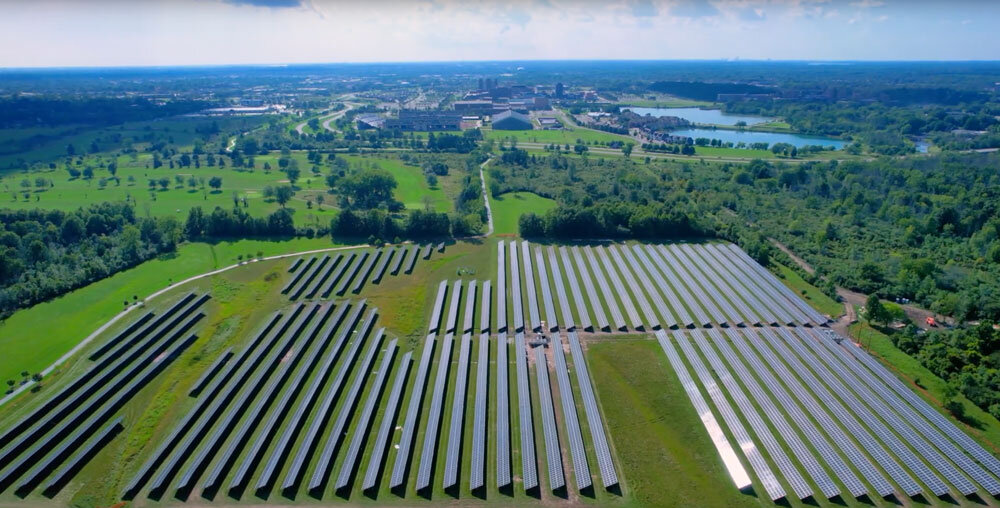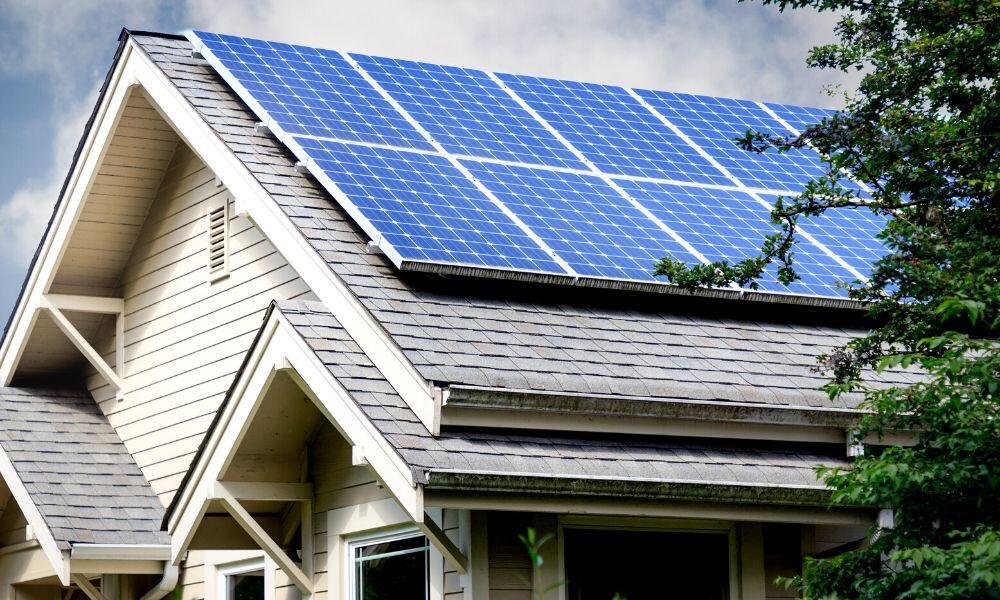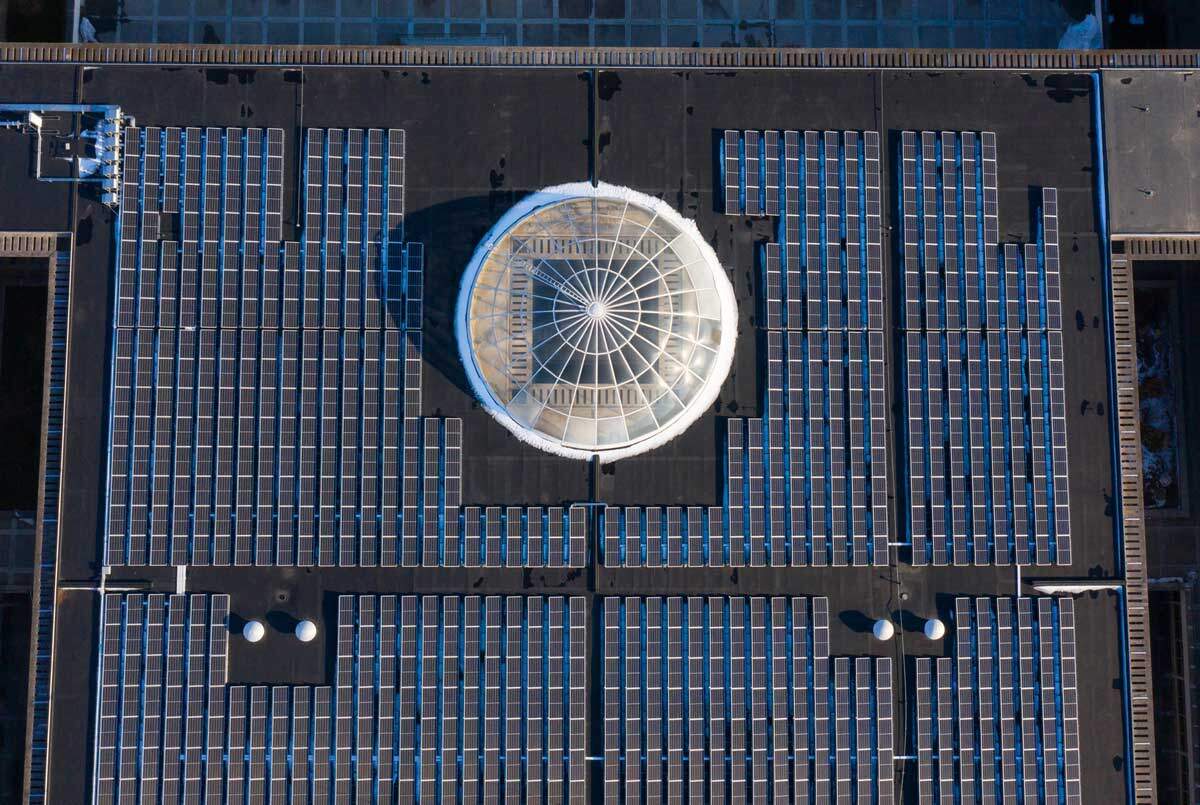Solar Power Three Weeks 3000 kwh
HANOVER, NY – It has been about three weeks since the town of Hanover began using the energy of the sun to power their town hall.
Solar panels were recently installed on the roof of Hanover Town Hall. The town’s solar-energy system has been fully operational for just three weeks, and already it has produced approximately 3,000 kilowatt-hours.
“When the system was originally designed and presented to us,” said Town Supervisor Katherine Tampio, standing in her town hall office, “it was projected to produce half the electricity for this building over the course of a year. So, we expect to see a reduction in our electric bill.”
The 25-kilowatt-output system, which Solar Liberty – a Buffalo-based renewable energy company – installed, are projected to cut electric costs at town hall in half, Tampio said.
The town expects to save approximately $3,495 on their annual electric bill of approximately $6,744, according to estimates Hanover received from Solar Liberty
At a meeting Wednesday morning in Tampio’s office, Nathan Rizzo, co-founder of Solar Liberty, told town officials to expect an average output of about 20 kilowatts on a warm, sunny day – like it was Wednesday – when the solar panels are in direct sunlight.
“Everything is running how it should be,” Rizzo said, about the solar-energy system. He added later, “They’re offsetting their electric usage, and they’re also showing to their residents that solar is a viable option in comparison to utility power.”
The total cost of the solar panel project was $149,943, but the New York State Energy Research and Development Authority, or NYSERDA, contributed $125,000. That made the town’s local share $24,943.
“We had that money reserved and earmarked for that in last year’s budget,” Tampio said.
It was initially estimated that it will take about 8 years for the energy cost savings to equal, or be greater than, the town’s local share of the project cost.
“But I’m suggesting, with the way the system is running, that it might be shorter than that,” Tampio said. She called the 8-year payoff period a “conservative estimate.”
Solar Liberty originally estimated the solar panels would produce about 27,613 kilowatt-hours annually. But after 3,000 kilowatt-hours were produced in the first three weeks the system has been online, Tampio’s prediction of a shorter payback period may be accurate.
The energy company said Wednesday the payback period may be closer to 6 years.
“It does have a reasonable payback time,” Rizzo said, explaining part of the appeal of municipal solar projects. “They will be saving tax dollars, while also producing a clean form of energy right on their site.”
After he outlined the solar system’s specifics at the meeting, Rizzo led the group of town officials – including Tampio, Councilman Kevin O’Connell, Water Department Supervisor Harold Anger and Town Clerk Janine Salzman – outside to show them how to monitor output and electrical production.
The easy-to-read LCD screen on the system inverter reported the output to be about 17 kilowatts under the late morning sun.
“You don’t have to be a scientist to go out there, read that meter and know that your system is producing power,” Tampio said.
Rizzo also explained some of the simple system maintenance that will need to be done periodically.
“You don’t have to worry about every little component part on it,” Anger said, expressing his relief that the system is easy to maintain. “With anything – whether it’s the sewer plant or the highway or whatever – you’re constantly doing maintenance on it. This makes our job a lot easier.”
The solar system will continue to be under warranty for a number of years, so the installer will deal with any major problems that arise.
Hanover isn’t quite on the cutting edge of alternative energy production in Chautauqua County, but they are one of the first municipalities in the county to complete a solar-panel project.
“My hope is that it catches on and people see that it’s a very good investment,” Tampio said. “That’s why I had Nathan (Rizzo) present at our supervisors and mayors meeting – to familiarize other townships and villages with their product and what we can gain from it.”
Solar Liberty said the system will offset the building’s carbon footprint by 476 tons of carbon dioxide. This is the equivalent of planting a forest of 19,000 trees or removing 865,000 miles of automobile traffic from the roads, the company estimated.
The town’s interest in pursuing renewable sources of energy doesn’t stop at solar. Depending on costs and available incentives, Hanover would consider wind-energy systems.
“We’re open to anything. The issue would be cost and our budget concerns for the year,” Tampio said. She continued, asking one of the main questions the town would want answered, “What incentives are available for wind systems?”
It comes down to saving money. If an idea or project will save tax dollars, then it’s something that should be explored, Tampio said.
The Observer
By John Mackowiak




